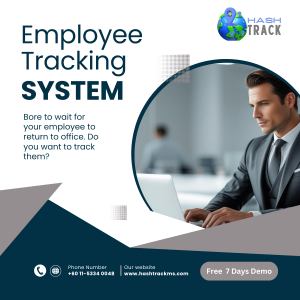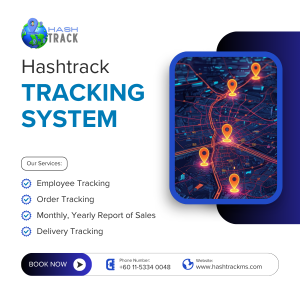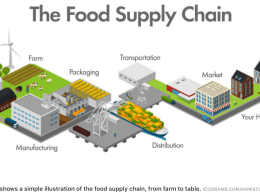Introduction
Imagine if you could find the exact farm where the cocoa beans for your favorite chocolate bar were grown. That used to be almost impossible. Now, blockchain makes it possible. Think of blockchain as a safe digital notebook shared by everyone in the supply chain. It records each step a product takes—from the farm all the way to your hands. This change helps companies work faster, save money, and earn customers’ trust. In this article, we’ll explain what blockchain transparency means, why traditional supply chains often lack clear visibility, and how blockchain fixes these problems. You’ll also see real-life examples and learn the best ways to get started.
What Is Blockchain Transparency?
Blockchain is like a big, shared notebook that everyone in the supply chain can see. It stores information in pages called “blocks.” Each block has details such as the time something happened, where it happened, and who moved the product. Before you add a new page, a special code locks the old pages so nobody can sneak in and change them without everyone noticing. Because everyone uses the same notebook, the information is open for all to check. No single person can hide or alter facts, which means fewer mistakes and less cheating. With blockchain, you get a clear, unbreakable trail showing exactly where a product has been at every step.
The Need for Supply Chain Transformation
In today’s world, supply chains are like huge, tangled webs that stretch across the globe. A single product can use parts made in different continents, move through many shipping companies, and get changed or packed several times before it reaches you. This makes supply chains fragile in several ways:
- It’s hard to see where things really come from, which can hide human rights abuses.
- Old tracking methods don’t work well, costing companies billions of dollars.
- Fake products slip into the market, putting people and brands at risk.
- “Green” or “eco-friendly” claims often can’t be checked or proven.
The World Economic Forum says these breakdowns cost businesses more than $1.5 trillion every year. Counterfeit goods make up about 3.3% of all the stuff traded around the world. These huge numbers show we need better tools.
That’s where HashTrack comes in. It’s a blockchain-powered system that makes supply chains clear, safe, and fast. Using a shared digital ledger, secure codes, and automated smart contracts, HashTrack helps businesses trace every step of a product’s journey.
Deep Dive: The Systemic Problems in Conventional Supply Chains
1. The Transparency Crisis
In today’s supply chains, a lot of information is hidden or unevenly shared. Here are some startling numbers:
- 65% of people don’t believe companies’ “green” or sustainability claims (Nielsen)
- 78% of businesses can only see details about their direct (tier-1) suppliers, not further down the line (MIT)
- 1 in every 10 food items sold may be tampered with or mislabeled (USP)
These gaps in information cause big problems:
- For companies: Damage to their good name if hidden labor issues come to light
- For shoppers: No way to check if a product is real or safe
- For regulators: Hard to ensure rules are being followed
By clarifying and sharing accurate data, we can help everyone—from businesses to consumers to regulators—make better, safer choices.
2. The Counterfeiting Epidemic
Counterfeit goods used to be obvious knock-offs you’d find at a street market. Now, they’ve become high-tech operations sneaking into real supply chains. They cause big problems in areas like:
Pharmaceuticals
- About 1,000,000 people die each year from fake medicines (WHO).
- Nearly 30% of drugs in developing countries are counterfeit.
Luxury Goods
- The fake luxury market is worth over $600 billion every year.
- Around 70% of “designer” items sold online aren’t real.
Industrial Components
- About 15% of airplane spare parts are fakes (FAA).
- Fake electronics lead to $169 billion in losses worldwide.
3. Operational Inefficiencies
Traditional tracking methods create staggering inefficiencies:
- Manual data entry errors cost $300 billion annually in logistics
- Paper-based documentation adds 20% to shipping costs
- Customs delays account for 30% of total shipment time
4. Sustainability Verification Challenges
With 66% of global consumers willing to pay more for sustainable products (Nielsen), the inability to prove ethical claims creates:
- Greenwashing accusations
- Compliance risks with new ESG regulations
- Lost market opportunities

HashTrack Technological Architecture
HashTrack’s solution combines multiple cutting-edge technologies into an integrated platform:
1. Multi-Layer Blockchain Infrastructure
- Permissioned blockchain: Enterprise-grade security with controlled access
- Hybrid architecture: Combines public and private chain benefits
- Interoperability: Compatible with major blockchain networks
2. Advanced Tracking Mechanisms
- Quantum-resistant encryption: Future-proof security
- Dynamic NFTs: Evolving digital twins for products
- IoT integration: Real-time sensor data recording
3. Smart Contract Framework
- Automated compliance: Self-executing regulatory checks
- Conditional payments: Funds release upon delivery verification
- Quality assurance: Automated rejection of substandard goods
Comprehensive Industry Applications
1. Pharmaceutical Supply Chains
HashTrack solves those key problems in a way that’s easy to understand:
- Cold chain monitoring: Uses smart temperature sensors (IoT) to log and share precise temperature data, so medicines and food stay at the right cold temperature.
- Batch authentication: Lets you scan or check each batch of products—especially medicines—to prove they’re real and safe.
- Recall management: If something goes wrong, HashTrack pinpoints exactly which batches are affected so you can pull them back immediately.
Case Study: In an African pilot program, HashTrack helped reduce fake malaria drugs by 89%.
2. Food & Agriculture
Implementation benefits include:
- Farm-to-fork visibility: Complete production history
- Organic certification: Immutable proof of practices
- Recall precision: Targeted withdrawals saving millions
- Impact: Reduced food fraud incidents by 76% in European trials
3. Luxury & Retail
Solutions for brand protection:
- Digital certificates of authenticity: Tied to physical products
- Second-hand verification: Provenance for resale markets
- Limited edition tracking: Anti-diversion protection
- Result: 92% reduction in counterfeit seizures for partner brands
4. Manufacturing & Industrial
Critical applications:
- Parts authentication: Genuine component verification
- Warranty management: Automated claim processing
- Maintenance logs: Tamper-proof equipment histories
- Outcome: 40% reduction in equipment downtime for automotive clients.

The Competitive Edge: HashTrack vs. Alternatives
Feature HashTrack Traditional Systems Competitor Solutions Data Integrity Cryptographic proof Manual verification Partial encryption Real-time Tracking IoT integration Periodic updates Limited connectivity Fraud Prevention Immutable records Audit-dependent Basic authentication Automation Level Smart contracts Manual processes Partial automation Sustainability Proof Verified claims Self-reported Limited verification
Implementation Roadmap
Phase 1: Pilot Integration (Weeks 1-8)
- System architecture assessment
- Limited product line onboarding
- Stakeholder training
Phase 2: Full Deployment (Months 3-6)
- Enterprise-wide rollout
- Supplier network onboarding
- API integrations
Phase 3: Optimization (Ongoing)
- AI-driven analytics
- Predictive logistics
- Continuous improvement
ROI Analysis
HashTrack delivers measurable financial benefits:
Cost Reductions:
- 45% decrease in counterfeit-related losses
- 30% reduction in compliance costs
- 25% lower logistics expenses
Revenue Opportunities:
- 18% premium pricing for verified sustainable products
- 35% increase in customer loyalty
- 40% faster time-to-market for new products
Risk Mitigation:
- 90% faster recall execution
- 80% reduction in compliance violations
- 60% decrease in insurance premiums
Future Developments
HashTrack’s innovation pipeline includes:
1. AI-Powered Predictive Supply Chains
- Demand forecasting
- Risk prediction
- Automated replenishment
2. Decentralized Autonomous Organizations (DAOs)
- Supplier governance
- Community verification
- Stakeholder voting
3. Tokenized Supply Chain Finance
- Asset-backed tokens
- Automated financing
- Dynamic pricing
Conclusion: The New Era of Supply Chain Trust
HashTrack represents more than a technological solution—it’s fundamentally transforming how businesses and consumers interact with physical goods. In an era where transparency is no longer optional but a competitive necessity, HashTrack provides:
- Unprecedented visibility across supply networks
- Mathematical certainty of product authenticity
- Automated efficiency that reduces costs
- Verifiable sustainability that builds brand equity
As supply chains continue to evolve into complex digital ecosystems, HashTrack positions enterprises at the forefront of this transformation. The platform doesn’t just solve today’s challenges—it creates tomorrow’s opportunities for innovation, trust, and value creation.












